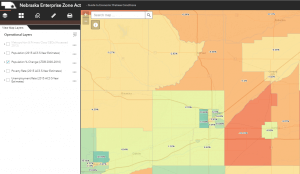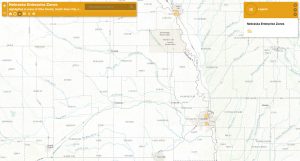Enterprise Zones

Enterprise Zones consist of areas of “economic distress,” meaning conditions of high unemployment, poverty, and declining population. DED accepts applications from Nebraska cities, villages, counties, or Tribal Government Areas that wish to apply for an Enterprise Zone designation.
DED gives preference for various business incentive and grant programs to projects located in whole or in part within a designated enterprise zone.
Affected Programs
Enterprise zone designations last for 10 years and provide preference in the following programs:

What are Enterprise Zones?
Enterprise Zones consist of areas of “economic distress,” meaning conditions of high unemployment, poverty, and declining population. DED accepts applications from Nebraska cities, villages, counties, or Tribal Government Areas that wish to apply for an Enterprise Zone designation.
DED may designate no more than five areas as Enterprise Zones based on eligible applications. There are currently designated Enterprise Zones in Omaha, South Sioux City, and Otoe County. DED is accepting applications for up to two more Enterprise Zones.
The Nebraska Enterprise Zones Act requires that no more than one zone shall be located inside the boundaries of a city of the metropolitan class (population 300,000 or greater), and no more than one shall be located inside the boundaries of a city of the primary class (population greater than 100,000, but less than 300,000). All Enterprise Zones located within a single county shall not exceed a total of sixteen square miles in area. Each area designated as an Enterprise Zone following an application period shall meet all eligibility criteria.
For questions about Enterprise Zone applications, please contact DED at 800-426-6505
Program Resources
Additional Support for Applicants
Economic Distress is defined as areas that meet, or are in reasonable proximity to areas that meet, two of the three following criteria:
- Exceeds 200% of the state average unemployment. In 2015 the state average unemployment rate was 3%. Therefore, proposed zones meeting this criterion must have an average of 6% or greater unemployment. This is the most significant condition in defining economic distress.
- An average poverty rate of 20% or greater. This is the second most significant condition in defining economic distress.
- An average loss of population of 10% or greater between the 2000 and 2010 U.S. Census.
Additionally, Enterprise Zones must be:
- An area located within the political subdivision of the applicant.
- One or more discrete areas not less than five miles apart and no greater than 16 square miles in total area.
- A total area with a population of 250 or more.
- An area outside of a Central Business District if located in a city with a population of 100,000 or more.
Questions about Enterprise Zones?
Nebraska Deptartment of Economic Development



